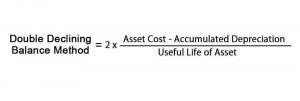
(2) Uncertainties in wood harvest cause large sensitivity to starting year of the simulation (StYr), as well as to IC and Trans in the artificial LULCC experiments. The retained earnings balance sheet cumulative net LULCC flux exhibits a reduced sensitivity to LULCC uncertainty with starting year 1850 (compare vertical spread of blue markers in the LULCC column) since the input data have smaller uncertainty in more recent years (Fig. A1). At the same time, the largest estimates of the cumulative net LULCC flux comparing experiments with different StYr are produced in simulations from 1850 (second column). The net cumulative LULCC flux is more sensitive to the LULCC uncertainty (22 % range in flux) and less sensitive to the starting year of the simulation (15 %).

Table of Contents
ToggleSupplementary information
Figure A1Global areas of the four BLUE land-cover types (primary land, secondary land, crop and pasture) based on the aggregated LUH2 input data (a, b) and their temporal net change (c, d). Panels (a) and (c) bookkeeping model show natural vegetation; (b) and (d) show agricultural area. HI, REG and LO correspond to the LUH2 LULCC high, baseline and low estimates, respectively.
- The dataset was remapped to the BLUE resolution of 0.25∘ through conservative remapping (i.e., area-weighted averaging).
- If you are operating a small, one-person business from home or even a larger consulting practice from a one-person office, you might want to stick with cash accounting.
- From about 1800 onwards, less harvest on primary land can be observed in the HI LULCC estimate, slightly more in LO and the most in REG.
- The baseline SSP4 scenario (SSP4-6.0) represents an evolution of progress with high agricultural productivity and environmental policies (reduced deforestation, re- and afforestation, etc.) in high-income countries and the opposite in low-income countries.
- Global maps of absolute and relative pixel-level uncertainty (Supplementary Fig. 9) are provided and can be used as a reference to evaluate the accuracy of our estimates for different regions.
External datasets
The separation of anthropogenic and natural carbon fluxes has been identified as one of the key challenges for reconciling and integrating models and observations14. The approach we developed tackles this challenge by disaggregating observation-based estimates of carbon stocks into the net LULCC flux (ELUC) and the natural terrestrial sink (SLAND). Our analysis highlights the importance of observational constraints for a more realistic representation of observed global vegetation dynamics in models and the attribution of anthropogenic vs. environmental impacts. Our consistent BLUE estimate of the net land flux as the sum of ELUC,trans and SLAND,trans suggests that land is a net sink of CO2 amounting to −1.2 (−2.1, −0.5) GtC yr−1 in 2012–2021 (Table 2, Fig. 4). This is a slightly weaker net sink than estimated by TRENDY (−1.4 ± 0.7 GtC yr−1 in 2012–2021) and atmospheric inversion systems (−1.4 (−2.0, −0.3) GtC yr−1 in 2012–2021), but similar to the net land flux estimate based on atmospheric O2 observations (−1.2 ± 0.8 GtC yr−1 in 2013–2022).
- LASC (RSS plus the environmental contribution to ELUC; see Table 1) amounts to 1.0 (0.5, 1.7) GtC yr−1 averaged over 2009–2018 (Supplementary Table 1) and thus accords with findings from ref. 16 (LASC of 0.8 ± 0.3 GtC yr−1 in 2009–2018).
- Typically, the two components of the terrestrial carbon budget—ELUC and SLAND—are estimated without considering impacts of environmental changes on the former and of land-use changes on the latter.
- The alternative scenario (SSP4-3.4) is based on more stringent mitigation policies, e.g. a larger carbon price.
- For the cumulative net LULCC flux over the industrial period, the uncertainty of LULCC is as relevant as applying wood harvest and gross transitions.
- That documentation may be a receipt, an invoice, a purchase order, or some similar type of financial record showing that the transaction took place.
Tammas Loughran
Because of this rule, it is also not possible that the area fraction in a grid cell exceeds 100 % due to previously neglected transitions. While in the default setup, changes are only due to LULCC, our assimilation approach now introduces environmental effects on woody vegetation carbon by assimilating the observed woody biomass carbon Law Firm Accounts Receivable Management densities in BLUE from 2000 onward according to the methodological considerations explained below. The LUH2 dataset (Hurtt et al., 2020) provides historical land-use estimates from 850 with uncertainty estimates for agricultural land area (from the History Database of the Global Environment, HYDE; Klein Goldewijk et al., 2017) and wood harvest (Zon and Sparhawk, 1923; Kaplan et al., 2017). The dataset captures the challenge of reconstructing the LULCC of the past.LUH2 is the land-use dataset that is – besides many other studies – also applied in CMIP6 (Eyring et al., 2016) for simulations with process-based DGVMs, like in LUMIP (Lawrence et al., 2016). Our findings and discussions regarding DGVM studies are therefore also informative for the interpretation of CMIP6 results.


Our baseline scenario (REG1700) exhibits a cumulative net LULCC flux of 242 PgC for the period 1850–2014. The sensitivity range due to LULCC uncertainty and starting year is about 22 % for comparable setups. In the nine main experiments, the cumulative net LULCC flux is at least 201 PgC (HI850) and at most 264 PgC (LO1850).
Here, the impact of modelling wood harvest and shifting cultivation as land management processes is compared to the impact of uncertainties of the LULCC dataset and the initialisation year of the LULCC simulation. We design additional artificial sensitivity experiments to disentangle the uncertainty from the initial land-cover distribution and the uncertainty from LULCC activities (transitions). By extending the historical simulations under future LULCC scenarios, we can then estimate the impact of past uncertainty on future estimates of the net LULCC flux. That current carbon budgeting approaches exclude the effects of environmental changes on ELUC may have important implications for our confidence in other budget terms. The budget imbalance (BIM) is a measure of uncertainty in the estimated terms of the GCB, as it describes the difference between the emissions and sinks on the land, in the ocean, and in the atmosphere7.